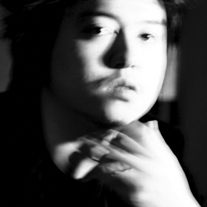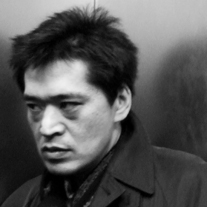 |
|
|
|
 |
|
|
|
|
| |
||||
|
|
Keiichiro Shibuya Musician. BA, Music Composition, Tokyo National University of Fine
Arts and Music. Shibuya founded ATAK in 2002 and made it his base. As
an electronica label, ATAK already has some CD releases of various artists:
GOEM, Kim Cascone, stilluppsteypa, slipped disk, etc. Further, ATAK
involves some experts from diverse fields such as space design, network
technology, etc. He has presented many installations, in close corporation
with the members of ATAK. In 2003, ATAK released "ATAK002 keiichiro
shibuya + yuji takahashi". An active collaboration between Shibuya
and Yuji Takahashi, composer/pianist, resulted in this piece. In this
year, he also invited stilluppsteypa from Iceland and toured around
Japan together(4 cities). In 2004, his first solo album "ATAK000
keiichiro shibuya" was released. And its outstanding quality of
composition focused on sound texture and rhythm gained his reputation
:"000 is definitely a great achievement. He has transformed the
history of electronic music after the sine wave movement into his composition.'
" |
|
|
|
||
|
Takashi Ikegami Scholar. Taking PhD. in Physics from the university of Tokyo in 1989,
Takashi Ikegami has been associate professor at the department of General
Systems Studies, Graduate School of Arts and Sciences, University of
Tokyo since 1994. His research theme is "Complex Systems = Understanding
life systems based on computer simulations", and has been challenging
the construction of life systems theory from dynamical systems perspectives.
After taking PhD., he proposed a new theory of ecosystems based on °»homeo-chaotic°…
dynamics collaborating with Kunihiko Kaneko. Chaos is often taken as
a disgusting factor in ecosystems. But they showed that weak chaos of
many degrees of freedom preserves diversity in an eco-system in a dynamic
way. Since then he has been greatly contributing to the Artificial Life
studies and has been working in different themes such as, self-reproduction,
computational theory and evolutionary game theory. In particular, a
model of machine-tape coevolution as a computational metaphor for the
evolution of genetic code was well known. He studied an evolution of
a set of virtual machines in a computer that read tapes and decode machines
out of them. Two notions of noise, the machine origin and the external
cause, were taken as two important factors that introduces evolvability
of new machine-tape network constructions. This work was collaboration
with Takashi Hashimoto. The machine-tape network theory is now used
in the third term music composition, a joint art project with Keiichiro
Shibuya. |
|

